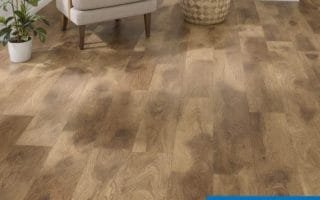When designing or renovating rooms with low ceilings, selecting the right flooring is crucial to create a sense of space and openness. The flooring not only impacts the visual perception of height but also affects the overall ambiance and functionality of the room. Here’s a comprehensive guide to help you navigate through the best flooring options for low-ceilinged spaces:
1. Light-Colored Hardwood Flooring

Light-colored hardwood floors, such as oak, maple, or ash, are timeless choices that can significantly enhance the perception of space in rooms with low ceilings. The light tones reflect more natural light, making the room feel brighter and more expansive. Hardwood adds a touch of warmth and elegance, complementing various interior styles.
Advantages:
- Enhances natural light reflection
- Adds warmth and character
- Durable and long-lasting with proper maintenance
- Suitable for most interior designs
Considerations:
- Prone to scratches and water damage; consider engineered hardwood for moisture-prone areas
2. Light-Toned Laminate Flooring
Laminate flooring offers a versatile and cost-effective alternative to hardwood. It comes in a wide range of styles and textures, including options that mimic the look of natural wood or stone. Opting for light-toned laminate can visually expand the room by reflecting light and creating a seamless flow from one space to another.
Advantages:
- Resistant to scratches, fading, and stains
- Easy to install and maintain
- Affordable compared to hardwood or tile
- Available in various styles and patterns
Considerations:
- Limited repair options for damaged planks; may need replacement
- Quality varies widely; choose high-quality laminate for better durability
3. Porcelain or Ceramic Tile
Porcelain or ceramic tile is an excellent choice for rooms that require moisture-resistant flooring, such as bathrooms and kitchens. These tiles come in a myriad of colors, including light shades that can contribute to creating an airy and spacious atmosphere. They are known for their durability, easy maintenance, and versatility in design.
Advantages:
- Highly durable and resistant to water and stains
- Wide range of colors, patterns, and textures
- Suitable for radiant heating systems
- Low maintenance and easy to clean
Considerations:
- Cold underfoot; use rugs or mats for comfort
- Installation may be labor-intensive and require professional expertise
4. Vinyl Plank Flooring
Vinyl plank flooring has gained popularity for its affordability, durability, and realistic appearance. It is available in a variety of styles, including wood and stone patterns, offering a cost-effective alternative to hardwood or tile. Opt for light-colored vinyl planks to maximize the illusion of space and create a cohesive look throughout the home.
Advantages:
- Water-resistant and suitable for high-moisture areas
- Comfortable underfoot and provides insulation
- Easy installation, often with click-lock systems
- Resistant to scratches, stains, and fading
Considerations:
- Quality varies; choose thicker planks for better durability
- May emit volatile organic compounds (VOCs); opt for low-VOC or eco-friendly options
5. Light-Colored Carpeting
While carpeting may not be the first choice for rooms with low ceilings, selecting a light-colored carpet can still be effective in creating a cozy and comfortable ambiance. Light tones, such as beige or cream, can visually expand the space and complement various interior styles. Choose low-pile carpets to prevent them from overwhelming the room.
Advantages:
- Adds warmth, softness, and acoustic insulation
- Provides comfort underfoot, especially in bedrooms or living areas
- Helps to reduce noise and echoes
Considerations:
- Prone to stains and requires regular maintenance
- Not ideal for high-traffic areas or moisture-prone spaces
Design Tips for Enhancing Low Ceilings
- Vertical Lines and Patterns: Incorporate vertical elements in your decor, such as striped rugs or tall bookcases, to draw the eye upward and create the illusion of height.
- Reflective Surfaces: Integrate mirrors, glass accents, or metallic finishes to reflect light and visually expand the space.
- Keep It Simple: Opt for minimalist furniture and decor to avoid clutter and maintain an open feel in the room.
- Ceiling Color: Paint the ceiling in a lighter shade than the walls to create a sense of height. Avoid dark colors, as they can make low ceilings feel oppressive.
- Natural Light: Maximize natural light with sheer curtains or blinds that allow light to filter through while maintaining privacy.




